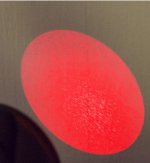kimmik
Well-known member

While twilight factor can guide you on how much twilight detail can be seen, I propose a light throughput equation, which allows you to compare the total photons passed through binoculars if used under the same environment. When your pupils are dilated, this factor correlates with the "wow so bright" feel. It doesn't correlate as well when your pupils are smaller than exit pupil.
Throughput = Aperture^2 x FOV^2 x transmission x vignette factor (where vignette factor is the size of exit pupil at the edge of eyepiece compared to center)
example - Noctivid 8x42: 42^2 x 7.7^2 x 0.9 x 0.5 = 47,000
vs - EL 8x32: 32^2 x 8^2 x 0.9 x 0.8 = 47,200
This does approximate my feel when using these two binoculars, which is that while they are in different aperture category, they are surprisingly comparable in global brightness sensation in dim conditions. There are other factors which also influence the sensation probably most notably blue spectrum transmission.
Another example - SLC 8x56: 56^2 x 7.6^2 x 0.93 x 0.7 = 118,000
NL 8x42 - 42^2 x 9.1^2 x 0.92 x 0.7 = 94,000
Under bright conditions (small eye pupils) on the other hand, the sensation of "wow so bright" has more to do with surface brightness, AFOV^2 x transmission.
Throughput = Aperture^2 x FOV^2 x transmission x vignette factor (where vignette factor is the size of exit pupil at the edge of eyepiece compared to center)
example - Noctivid 8x42: 42^2 x 7.7^2 x 0.9 x 0.5 = 47,000
vs - EL 8x32: 32^2 x 8^2 x 0.9 x 0.8 = 47,200
This does approximate my feel when using these two binoculars, which is that while they are in different aperture category, they are surprisingly comparable in global brightness sensation in dim conditions. There are other factors which also influence the sensation probably most notably blue spectrum transmission.
Another example - SLC 8x56: 56^2 x 7.6^2 x 0.93 x 0.7 = 118,000
NL 8x42 - 42^2 x 9.1^2 x 0.92 x 0.7 = 94,000
Under bright conditions (small eye pupils) on the other hand, the sensation of "wow so bright" has more to do with surface brightness, AFOV^2 x transmission.
Last edited:











